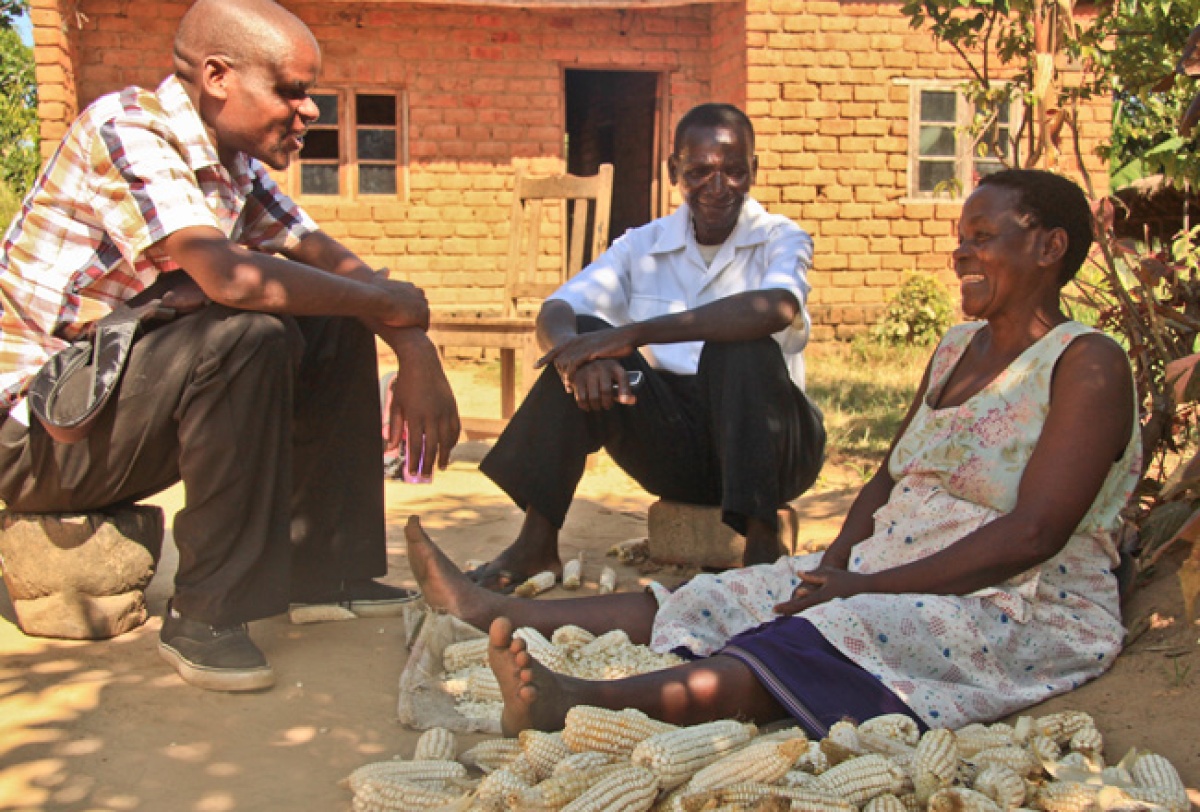Need to Know: Malawi Household Chart
Posted on May 29, 2013

Spend a day at any Partners In Health site and there’s a good chance you’ll hear a phrase you’re unfamiliar with. Perhaps it’s a clunky acronym or polysyllabic drug name. But don’t worry: Keeping up with the ever-evolving world of global health is hard, even for insiders. In Need to Know, we cut through the complexity and deliver the most pertinent and interesting information on a single subject. Today, we fill you in on the Malawi Household Chart.
What is it?
The Household Chart seems pretty basic at first glance. It’s a two-page, paper form that looks like a simplified medical chart. But this chart—and the data it collects—has revolutionized the way PIH’s village health workers (VHWs) in Malawi do their jobs. The Household Chart is a data collection sheet that helps VHWs gather information about the health and social conditions of the families they serve.
Why is it important?
Because VHWs live among PIH’s patients and visit them regularly, they’re able to closely monitor the pulse of the community. If a pregnant mother gets sick or a river floods homes that are nearby, VHWs are among the first to know. VHWs use the Household Chart to collect information during monthly visits to each household in their village. The chart prompts questions such as, “Have you been tested for HIV?” and “Have you been coughing for the past weeks?”—questions that allow us to identify patients who are at increased risk and provide social assistance or medical care where needed. PIH uses the combined information from hundreds of VHWs to monitor the health of entire communities. If they require services, PIH will refer or accompany them to the nearest health facility so that they receive the care they need.
Where does it come from?
The Household Chart was developed by the PIH team in Malawi based in part from lessons shared by the PIH team in Rwanda. Working with VHWs and clinicians, the Malawi team identified the information that VHWs could collect, and then designed the Household Chart forms to be as easy as possible to use.
Why do you need it?
Accurately collecting, summarizing, and using large amounts of paper-based data is a huge undertaking. When summarizing figures from hundreds of different charts into an electronic database, it’s easy to introduce errors that make the data unreliable and less useful for making decisions about PIH’s programs.
How do you know the data collected are accurate?
We partnered with researchers at Harvard Medical School to apply an approach called Lot Quality Assurance Sampling (LQAS) to evaluate the quality of Household Chart data. LQAS is a technique used in manufacturing to evaluate the quality of, for example, a batch (or “lot”) of T-shirts that a factory produces. Instead of having to look at each T-shirt to determine its quality, LQAS allows the manufacturer to take a sample of T-shirts and determine if the quality of the lot of T-shirts is acceptable. PIH uses the same approach with Household Chart data. Using LQAS allows PIH staff to examine only a few Household Charts from a health center (the lot) and decide whether the summary data quality from dozens of VHWs is statistically good enough to produce reliable results.
Does it work?
Yes. The LQAS quality control efforts have made the Household Chart data more accurate and usable, according to peer-reviewed findings published in Public Health Action. Before LQAS started, four out of PIH’s five household chart areas had low data quality; after eight months of using LQAS to identify poor data quality and focus data quality improvement efforts, all five areas had high data quality. The results have been so positive that we’re now exploring ways to use the Household Chart and LQAS at other PIH sites around the world.
Can I see one?
Sure. Below is a sample of the Household Chart. PIH has made a great effort to ensure the format and questions of the Household Chart are simple and intuitive for VHWs to use.

